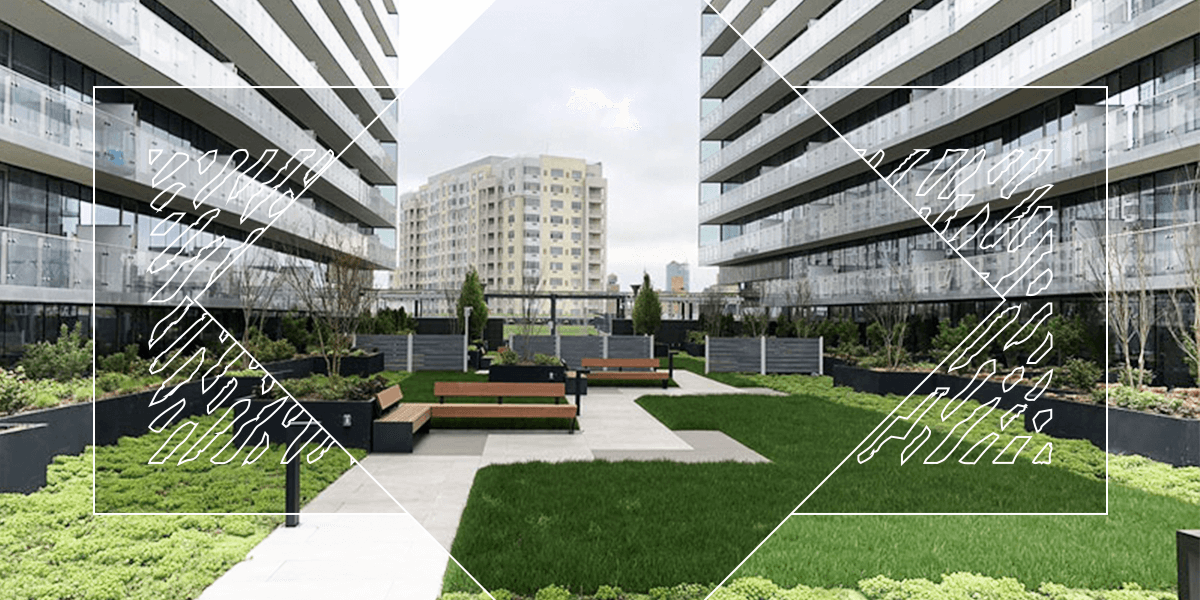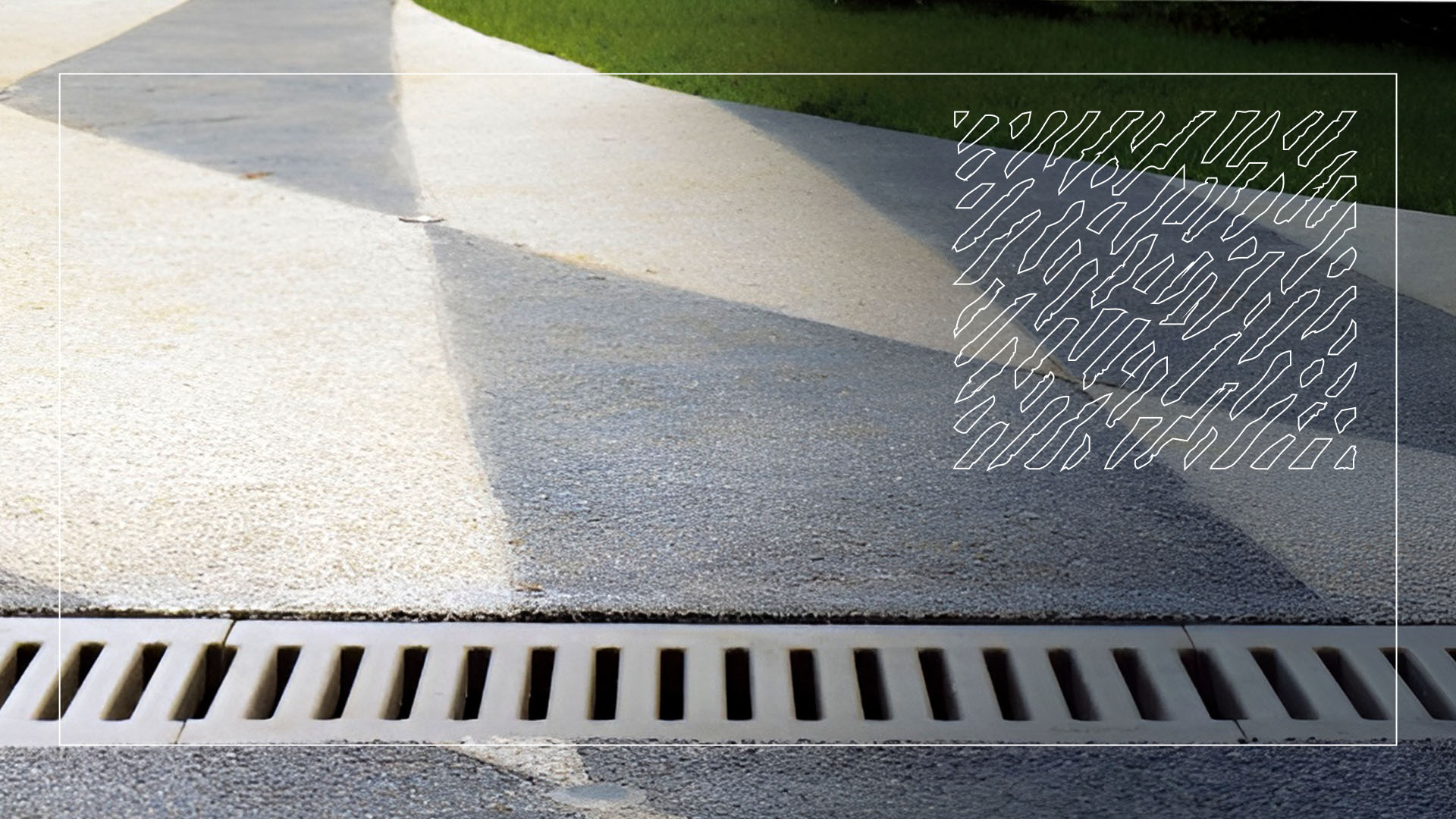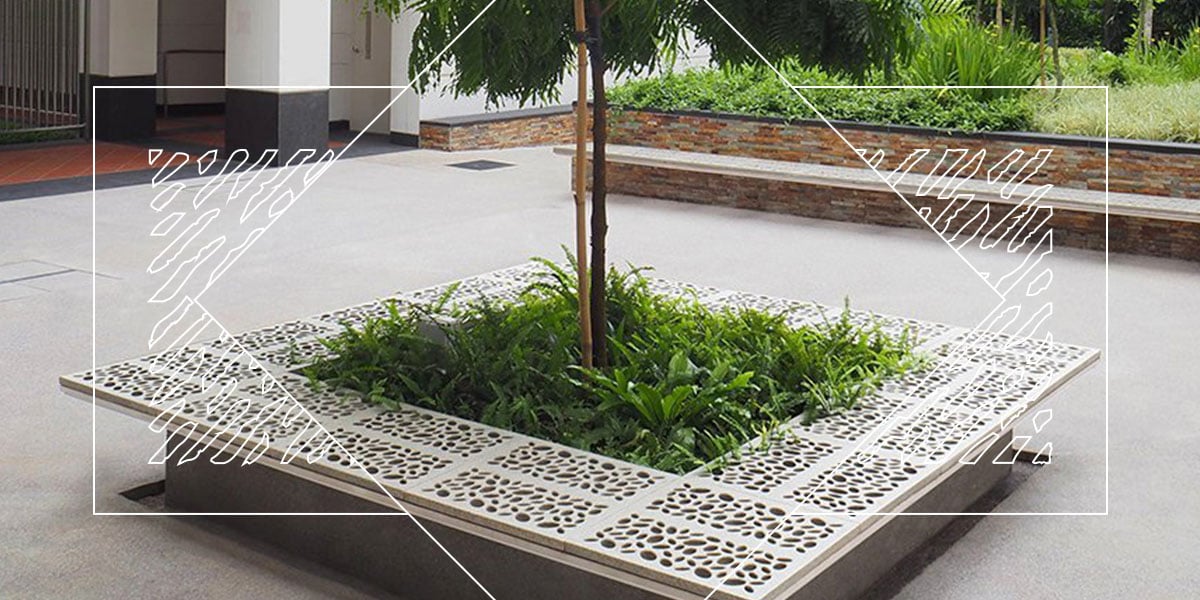Trees can add a number of design and environmental benefits to urban landscapes. However, a simple, decorative tree can turn into a serious problem if its roots start clogging drains.
Everyone knows trees need water and nutrients to live. Sometimes trees go searching for water and nutrients in underground pipes or trench drains, which can lead to some disastrous consequences. When trees do this, they may break the pipes and grow within them or completely fill the trench and cause the line to back up. Either way, it prevents the flow of liquid and prevents the drain from doing its job.
You may notice some signs if tree roots are clogging your drains. Indoors, recurring backed-up drains and gurgling sounds may occur in your sinks and toilets. Outdoors, puddles may form from inadequate water flow and sewage can even leak above ground, both of which are characterized by standing water, spongy grass, and unpleasant smells. These are all signs that your drains are clogged and that action is necessary.
Clogged drains are so troublesome that they may require expensive solutions from a plumber or sewer line specialist. Eventually, the tree roots may need to be completely cleared from the pipes. The best way to avoid these problems is to prevent tree roots from becoming a problem in the first place.
Start at the Base with a Tree Grate
Problems from tree roots should be curtailed starting at the tree itself. The way in which tree root systems grow is dependent on the density of the soil. Loose soil will allow a tree to grow downward and, in some cases, form a hardy and healthy taproot. However, compacted soils will force root growth outward and force it to become more sprawling. This is where problems can come in, as tree roots overtake pipes or fill in trench drains.
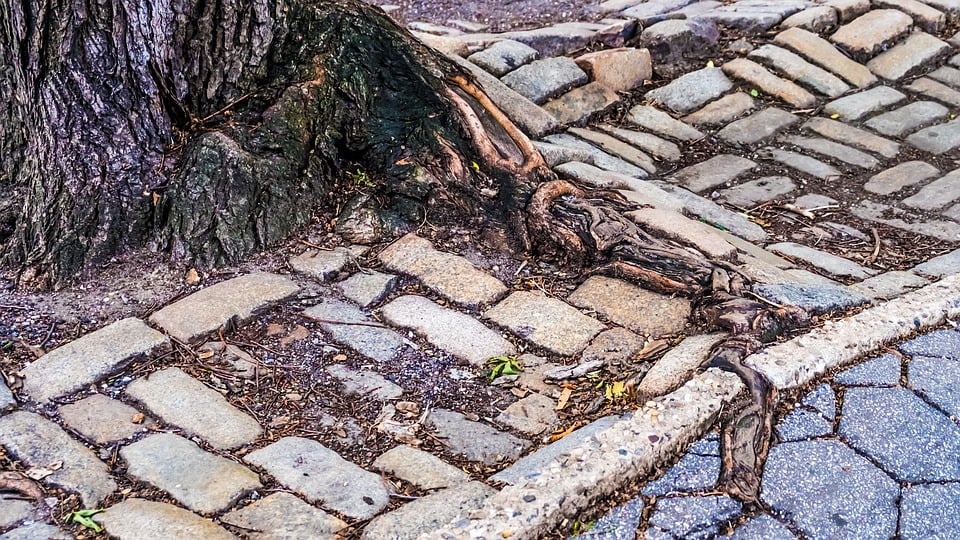 Unmanaged tree roots can lead to unsightly growth above ground and cause problems below ground.
Unmanaged tree roots can lead to unsightly growth above ground and cause problems below ground.
The most direct way to address this is to ensure the base of the tree is safe from compaction. A tree grate provides a physical barrier between the base of the tree and anything that will compress it. It gives the roots around the tree room to grow, which can prevent them from spreading out and spilling into drains.
What to Look for in Tree Grate Manufacturers
Tree grates can make a big difference in a landscape, so when choosing one, both your plant management and design goals should be considered. Functionally, a tree grate should have slits that are large enough to allow rainwater to easily drain but not so large that they allow debris to fall in. Visually, a tree grate should emphasize the beauty of the tree it is paired with, leading to a more natural feeling within the landscape. Both objectives can be met through the right tree grill design.
Other considerations should also be made in special situations. Some may desire an ADA compliant tree grate while others may desire a tree grate made with natural materials.
Decorative Tree Choice
Just as important as picking the right tree grate is picking the right decorative tee. A tree should, obviously, look nice and bring nature into the urban hardscape. However, when considering the drain clogging potential of tree roots, there is more to think about.
 Tree grates naturally incorporate decorative trees into cityscapes.
Tree grates naturally incorporate decorative trees into cityscapes.
Using a tree grate can help prevent roots from spreading. Unfortunately, some trees, like maple and ash, have a tendency to spread laterally anyway. Doing some quick research into the right kind of tree for your area can have a big impact on how they affect your landscape.
In addition, younger trees that grow significantly may require an expandable tree grate. A grate like this will allow for future tree growth and reduced maintenance.
Stone Tree Grates or Cast Iron Tree Grates?
A final consideration to make comes from choosing the grate's material.
Some tree grates are cast iron or metal. The metal in these grates can cause an increase in the surrounding temperature, putting the tree’s growth at risk. They are also made from metals that are prone to theft since they can be sold for scrap.
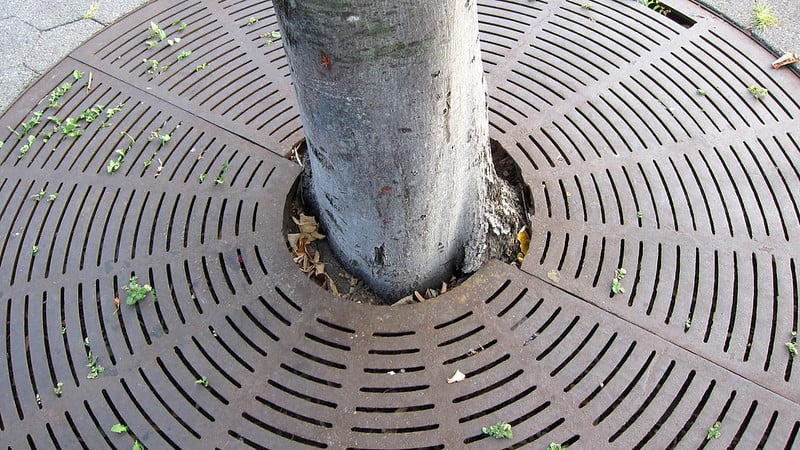 Cast iron tree grates may inhibit tree growth and be prone to theft.
Cast iron tree grates may inhibit tree growth and be prone to theft.
On the other hand, reinforced stone tree grates do not face these issues. The stone does not heat up like metal and does not damage nearby trees. Stone is also a harder material to sell for scrap, preventing it from becoming the target of potential theft. For these reasons, stone tree grates offer benefits that may outshine many cast iron tree grates.
Final Thoughts
Tree roots can be the bane of many drainage systems. They can cause water to pool in unexpected places and cost a fortune in repairs.
However, ensuring trees have room to grow can help in managing root systems. Tree grates can provide this room by preventing soil compaction and the problems caused by it. They also provide practical and aesthetic benefits for any type of landscape.




